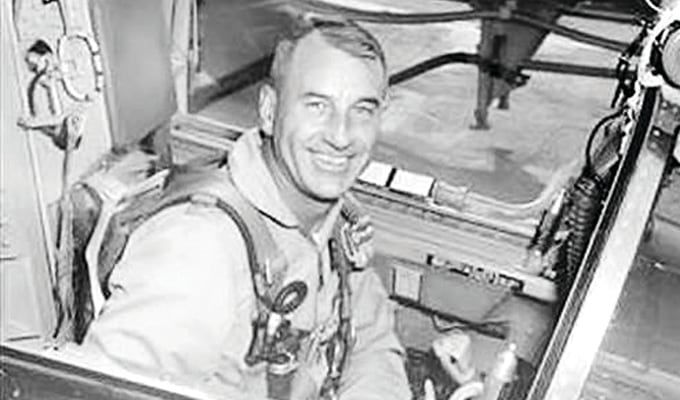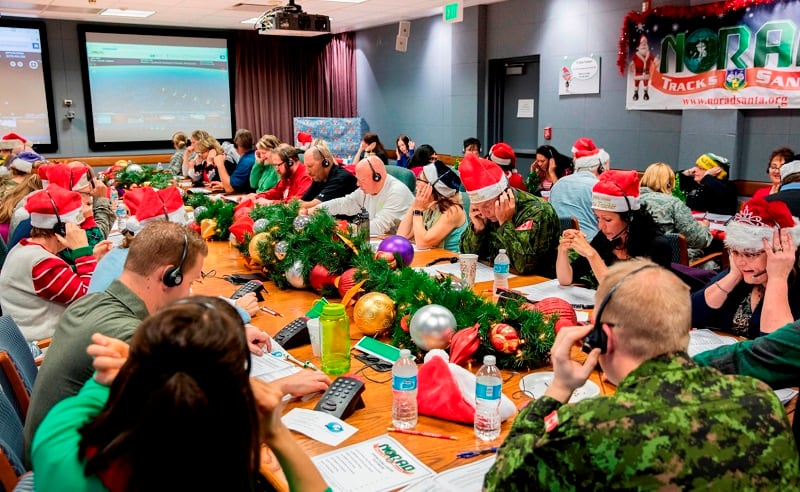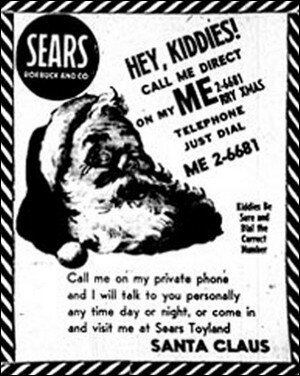Col. Harry Shoup was sitting in his office in early December 1955 when the red phone on his desk rang.
Only one other person — a four-star general at the Pentagon — was supposed to have the number to that hotline at the Continental Air Defense Command in Colorado Springs, the predecessor to today’s North American Aerospace Defense Command, or NORAD. If it rang, it might mean Shoup was about to learn World War III had broken out.
But when he answered, a small boy’s voice asked, “Is this Santa Claus?”
Those four words sparked what would eventually become a wildly popular tradition: NORAD Tracks Santa.
In a 2014 interview with StoryCorps that originally aired on NPR, Shoup’s three children said the disciplined, straight-laced Air Force officer was not amused at first.
“He thought it was a joke,” Shoup’s son, Richard, said. He was “annoyed” and “upset,” his daughters, Terri Van Keuren and Pamela Farrell, said.

It was only when the child started crying that Shoup realized it wasn’t a prank call. So he switched gears, Farrell said. He broke out his best ho-ho-ho, and asked if the kid had been a good boy that year. He then asked to talk to the boy’s mother, who alerted him to a pretty big mistake.
“The mother got on and said, ‘You haven’t seen the paper yet?'" Farrell told StoryCorps. “'There’s a phone number to call Santa. It’s in the Sears ad.’”
Sure enough, there it was, right next to jolly old Saint Nick: The red phone number and an invitation to “Call me on my private phone and I will talk to you personally any time day or night.” And ironically, the ad advised, “Kiddies, be sure and dial the correct number.”
And they did. One child after another began calling CONAD, so Shoup grabbed a few airmen to man the phones and play Santa as the Christmas season progressed.
RELATED

“It got to be a big joke at the command center,” Van Keuren said. “You know, ‘The old man’s really flipped his lid this time. We’re answering Santa calls.’”
When Shoup walked in Christmas Eve, he looked at the big glass board with maps of the U.S. and Canada that CONAD used to track airplanes. But that day, he saw his airmen had put a drawing of Santa’s sleigh, reindeer and all, coming over the North Pole.

His airmen apologized for the joke and offered to take it down. Shoup looked at it for a while, and then made the decision that launched what is now a decades-long Santa-tracking tradition.
“Next thing you know, dad had called the radio station and had said, ‘This is the commander at the Combat Alert Center and we have an unidentified flying object,’” Van Keuren said, laughing. “'Why, it looks like a sleigh.' Well, the radio stations would call him like every hour and say, ‘Where’s Santa now?’"
And the calls kept pouring in from eager kids. Shoup’s command team kept checking the radar and updating the kids about where Santa was at that minute.
CONAD kept the tradition going the following year and the next, and it continued when NORAD replaced CONAD in 1958. Today, NORAD Tracks Santa is a multi-media experience that goes live every Dec. 1, including a website, games, videos, books and more. Last year, Amazon’s voice-activated Alexa service began relaying NORAD Tracks Santa updates through the Echo.
Shoup’s children agreed that starting the Santa tracker was the thing Shoup, who died in 2009, was most proud of in his career. Van Keuren said later in his life, he received many letters from people all over the world, thanking him for having a sense of humor about it — and he would carry them around in a locked briefcase “like it was top secret information.”
“He was an important guy, but this is the thing he’s known for,” Van Keuren said.
To follow Santa’s journey this Chistmas, visit NORAD’s Santa Tracker.
Stephen Losey is the air warfare reporter for Defense News. He previously covered leadership and personnel issues at Air Force Times, and the Pentagon, special operations and air warfare at Military.com. He has traveled to the Middle East to cover U.S. Air Force operations.




